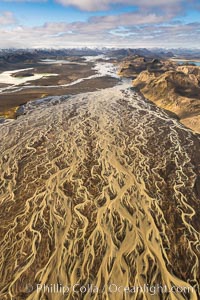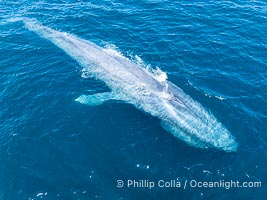
Aerial photo of blue whale near San Diego. This enormous blue whale glides at the surface of the ocean, resting and breathing before it dives to feed on subsurface krill.
Species: Blue whale, Balaenoptera musculus
Location: San Diego, California
Image ID: 40611
Species: Blue whale, Balaenoptera musculus
Location: San Diego, California
Image ID: 40611

Male Brandt's Cormorant Skypointing, Courtship Display, Breeding Plumage with blue throat and a few white pin-feathers, La Jolla. Skypointing is an interesting courtship behavior that many birds practice. Among Brandt's Cormorants the male performs this, likely as a way of attracting a mate to the nest he has built by showing off his striking blue throat. He tips his head backward showing off his striking blue throat, and partially raises his wings. Seen here on seacliffs above the ocean.
Species: Brandt's cormorant, Phalacrocorax penicillatus
Location: La Jolla, California
Image ID: 40133
Species: Brandt's cormorant, Phalacrocorax penicillatus
Location: La Jolla, California
Image ID: 40133
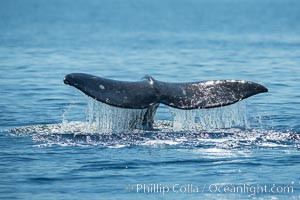
Gray whale raising fluke before diving, on southern migration to calving lagoons in Baja.
Species: Gray whale, Eschrichtius robustus
Location: San Diego, California
Image ID: 30463
Species: Gray whale, Eschrichtius robustus
Location: San Diego, California
Image ID: 30463
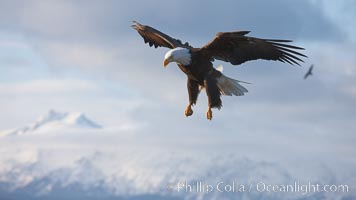
Bald eagle in flight, sidelit, cloudy sky and Kenai Mountains in the background.
Species: Bald eagle, Haliaeetus leucocephalus, Haliaeetus leucocephalus washingtoniensis
Location: Kachemak Bay, Homer, Alaska
Image ID: 22596
Species: Bald eagle, Haliaeetus leucocephalus, Haliaeetus leucocephalus washingtoniensis
Location: Kachemak Bay, Homer, Alaska
Image ID: 22596
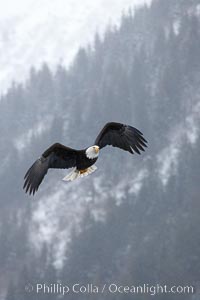
Bald eagle in flight, snow falling, trees and Kenai Mountains in background.
Species: Bald eagle, Haliaeetus leucocephalus, Haliaeetus leucocephalus washingtoniensis
Location: Kenai Peninsula, Alaska
Image ID: 22598
Species: Bald eagle, Haliaeetus leucocephalus, Haliaeetus leucocephalus washingtoniensis
Location: Kenai Peninsula, Alaska
Image ID: 22598
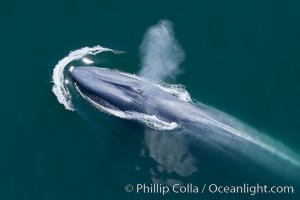
Blue whale, exhaling as it surfaces from a dive, aerial photo. The blue whale is the largest animal ever to have lived on Earth, exceeding 100' in length and 200 tons in weight.
Species: Blue whale, Balaenoptera musculus
Location: Redondo Beach, California
Image ID: 25953
Species: Blue whale, Balaenoptera musculus
Location: Redondo Beach, California
Image ID: 25953

Blue whale, exhaling in a huge blow as it swims at the surface between deep dives. The blue whale's blow is a combination of water spray from around its blowhole and condensation from its warm breath.
Species: Blue whale, Balaenoptera musculus
Location: La Jolla, California
Image ID: 21249
Species: Blue whale, Balaenoptera musculus
Location: La Jolla, California
Image ID: 21249
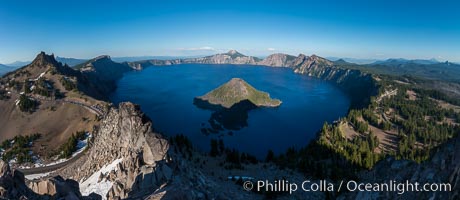
Panorama of Crater Lake from Watchman Lookout Station, panoramic picture. The Watchman Lookout Station No. 168 is one of two fire lookout towers in Crater Lake National Park in southern Oregon. For many years, National Park Service personnel used the lookout to watch for wildfires during the summer months. It is also a popular hiking destination because it offers an excellent view of Crater Lake and the surrounding area.
Location: Crater Lake National Park, Oregon
Image ID: 28633
Panorama dimensions: 4885 x 11229
Location: Crater Lake National Park, Oregon
Image ID: 28633
Panorama dimensions: 4885 x 11229
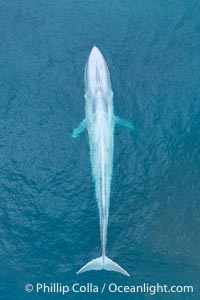
Aerial photo of blue whale near San Diego. This enormous blue whale glides at the surface of the ocean, resting and breathing before it dives to feed on subsurface krill.
Species: Blue whale, Balaenoptera musculus
Location: San Diego, California
Image ID: 39421
Species: Blue whale, Balaenoptera musculus
Location: San Diego, California
Image ID: 39421
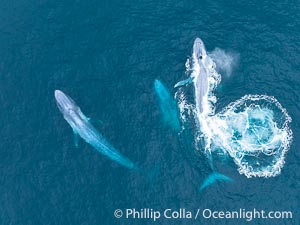
Aerial photo of three blue whales socializing near San Diego.
Species: Blue whale, Balaenoptera musculus
Location: San Diego, California
Image ID: 39429
Species: Blue whale, Balaenoptera musculus
Location: San Diego, California
Image ID: 39429

Parasitic zoanthid anemones cover and encrust and overwhelm a golden gorgonian, Catalina Head.
Species: Luminescent parazoanthid, Zoanthid anemone, Parazoanthus lucificum, Savalia lucifica
Location: Catalina Island, California
Image ID: 37294
Species: Luminescent parazoanthid, Zoanthid anemone, Parazoanthus lucificum, Savalia lucifica
Location: Catalina Island, California
Image ID: 37294
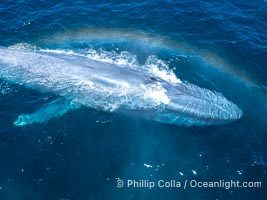
Aerial photo of blue whale with a rainbow in its blow (spout), near San Diego. This enormous blue whale glides at the surface of the ocean, resting and breathing before it dives to feed on subsurface krill.
Species: Blue whale, Balaenoptera musculus
Location: San Diego, California
Image ID: 40612
Species: Blue whale, Balaenoptera musculus
Location: San Diego, California
Image ID: 40612

Blue whale underwater closeup photo. This incredible picture of a blue whale, the largest animal ever to inhabit earth, shows it swimming through the open ocean, a rare underwater view.
Species: Blue whale, Balaenoptera musculus
Location: California
Image ID: 27324
Species: Blue whale, Balaenoptera musculus
Location: California
Image ID: 27324

Blue whale underwater closeup photo. This incredible picture of a blue whale, the largest animal ever to inhabit earth, shows it swimming through the open ocean, a rare underwater view.
Species: Blue whale, Balaenoptera musculus
Location: California
Image ID: 27331
Species: Blue whale, Balaenoptera musculus
Location: California
Image ID: 27331
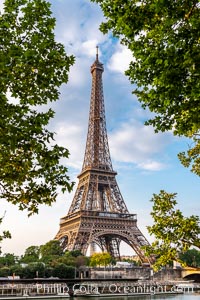
La Tour Eiffel. The Eiffel Tower is an iron lattice tower located on the Champ de Mars in Paris, named after the engineer Gustave Eiffel, who designed the tower in 1889 as the entrance arch to the 1889 World's Fair. The Eiffel tower is the tallest structure in Paris and the most-visited paid monument in the world.
Location: Tour Eiffel, Paris, France
Image ID: 35603
Location: Tour Eiffel, Paris, France
Image ID: 35603
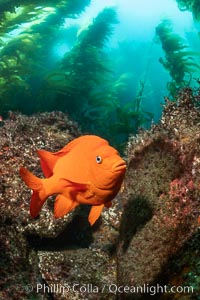
Garibaldi maintains a patch of algae (just in front of the fish) to entice a female to lay a clutch of eggs.
Image ID: 37144
Image ID: 37144
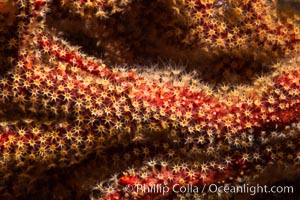
California Golden gorgonian polyps. The golden gorgonian is a colonial organism composed of thousands of tiny polyps. Each polyp secretes calcium which accumulates to form the structure of the colony. The fan-shaped gorgonian is oriented perpendicular to prevailing ocean currents to better enable to filter-feeding polyps to capture passing plankton and detritus passing by.
Location: San Diego, California
Image ID: 37204
Location: San Diego, California
Image ID: 37204
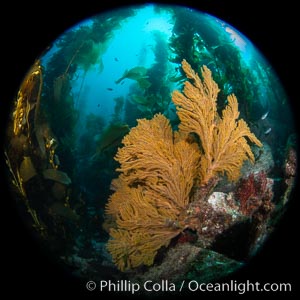
Golden gorgonian on underwater rocky reef, amid kelp forest, Catalina Island.
Species: California golden gorgonian, Muricea californica
Location: Catalina Island, California
Image ID: 37256
Species: California golden gorgonian, Muricea californica
Location: Catalina Island, California
Image ID: 37256
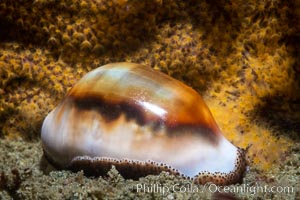
Chestnut cowrie with mantle withdrawn, in front of golden gorgonian.
Species: Chestnut Cowrie, Date Cowrie, Cypraea spadicea
Location: San Diego, California
Image ID: 37289
Species: Chestnut Cowrie, Date Cowrie, Cypraea spadicea
Location: San Diego, California
Image ID: 37289

Southern right whale eyeballing the camera up close, Eubalaena australis. Whale lice can be seen clearly in the folds and crevices around the whales eye and lip groove.
Species: Southern Right Whale, Eubalaena australis
Location: Puerto Piramides, Chubut, Argentina
Image ID: 38368
Species: Southern Right Whale, Eubalaena australis
Location: Puerto Piramides, Chubut, Argentina
Image ID: 38368
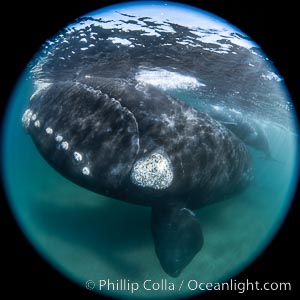
Southern right whale eyeballing the camera up close, Eubalaena australis. Whale lice can be seen clearly in the folds and crevices around the whales eye and lip groove.
Species: Southern Right Whale, Eubalaena australis
Location: Puerto Piramides, Chubut, Argentina
Image ID: 38369
Species: Southern Right Whale, Eubalaena australis
Location: Puerto Piramides, Chubut, Argentina
Image ID: 38369

Garibaldi and California golden gorgonian on underwater rocky reef, San Clemente Island. The golden gorgonian is a filter-feeding temperate colonial species that lives on the rocky bottom at depths between 50 to 200 feet deep. Each individual polyp is a distinct animal, together they secrete calcium that forms the structure of the colony. Gorgonians are oriented at right angles to prevailing water currents to capture plankton drifting by.
Species: California golden gorgonian, Giant kelp, Muricea californica, Macrocystis pyrifera
Location: San Clemente Island, California
Image ID: 38501
Species: California golden gorgonian, Giant kelp, Muricea californica, Macrocystis pyrifera
Location: San Clemente Island, California
Image ID: 38501
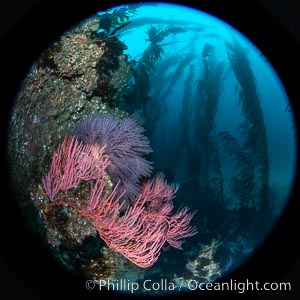
Red gorgonian on rocky reef, below kelp forest, underwater. The red gorgonian is a filter-feeding temperate colonial species that lives on the rocky bottom at depths between 50 to 200 feet deep. Gorgonians are typically oriented at right angles to prevailing water currents to capture plankton drifting by.
Species: Red gorgonian, Giant kelp, Brown gorgonian, Leptogorgia chilensis, Lophogorgia chilensis, Macrocystis pyrifera, Muricea fruticosa
Location: San Clemente Island, California
Image ID: 38502
Species: Red gorgonian, Giant kelp, Brown gorgonian, Leptogorgia chilensis, Lophogorgia chilensis, Macrocystis pyrifera, Muricea fruticosa
Location: San Clemente Island, California
Image ID: 38502

Garibaldi and California golden gorgonian on underwater rocky reef, San Clemente Island. The golden gorgonian is a filter-feeding temperate colonial species that lives on the rocky bottom at depths between 50 to 200 feet deep. Each individual polyp is a distinct animal, together they secrete calcium that forms the structure of the colony. Gorgonians are oriented at right angles to prevailing water currents to capture plankton drifting by.
Species: California golden gorgonian, Giant kelp, Muricea californica, Macrocystis pyrifera
Location: San Clemente Island, California
Image ID: 38504
Species: California golden gorgonian, Giant kelp, Muricea californica, Macrocystis pyrifera
Location: San Clemente Island, California
Image ID: 38504
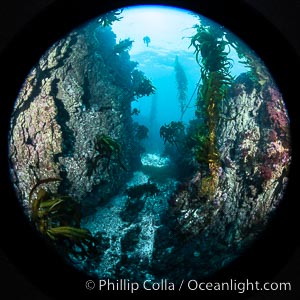
Spectacular underwater rocky reef topography at San Clemente Island, typified by crevices, walls and profuse vertical relief on the rocky ocean bottom below the kelp forest.
Location: San Clemente Island, California
Image ID: 38505
Location: San Clemente Island, California
Image ID: 38505
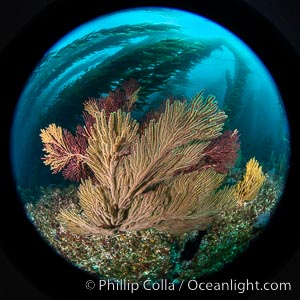
Garibaldi and California golden gorgonian on underwater rocky reef, San Clemente Island. The golden gorgonian is a filter-feeding temperate colonial species that lives on the rocky bottom at depths between 50 to 200 feet deep. Each individual polyp is a distinct animal, together they secrete calcium that forms the structure of the colony. Gorgonians are oriented at right angles to prevailing water currents to capture plankton drifting by.
Species: California golden gorgonian, Giant kelp, Muricea californica, Macrocystis pyrifera
Location: San Clemente Island, California
Image ID: 38509
Species: California golden gorgonian, Giant kelp, Muricea californica, Macrocystis pyrifera
Location: San Clemente Island, California
Image ID: 38509

Garibaldi and California golden gorgonian on underwater rocky reef, San Clemente Island. The golden gorgonian is a filter-feeding temperate colonial species that lives on the rocky bottom at depths between 50 to 200 feet deep. Each individual polyp is a distinct animal, together they secrete calcium that forms the structure of the colony. Gorgonians are oriented at right angles to prevailing water currents to capture plankton drifting by.
Species: California golden gorgonian, Giant kelp, Garibaldi, Muricea californica, Macrocystis pyrifera, Hypsypops rubicundus
Location: San Clemente Island, California
Image ID: 38510
Species: California golden gorgonian, Giant kelp, Garibaldi, Muricea californica, Macrocystis pyrifera, Hypsypops rubicundus
Location: San Clemente Island, California
Image ID: 38510
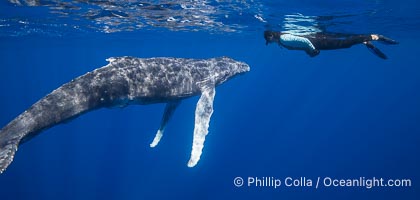
Tracy Meets a South Pacific Humpback Whale Calf Underwater, Moorea, French Polynesia. Interspecies diplomacy.
Species: Humpback whale, Megaptera novaeangliae
Location: Moorea, French Polynesia, France
Image ID: 40620
Species: Humpback whale, Megaptera novaeangliae
Location: Moorea, French Polynesia, France
Image ID: 40620
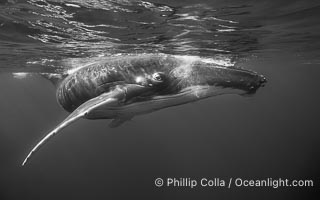
South Pacific Humpback Whale Underwater, Moorea, French Polynesia.
Species: Humpback whale, Megaptera novaeangliae
Location: Moorea, French Polynesia, France
Image ID: 40636
Species: Humpback whale, Megaptera novaeangliae
Location: Moorea, French Polynesia, France
Image ID: 40636
